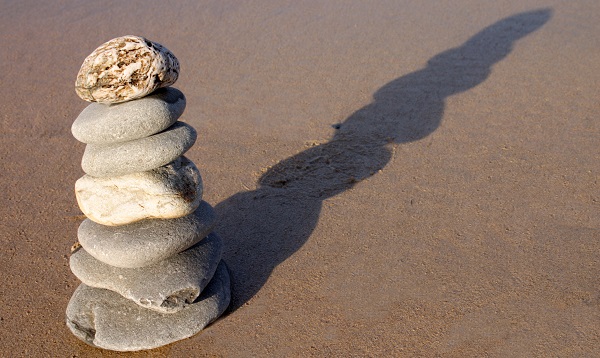|

Stop Stacking Stones
By Wendy Priesnitz
If you've recently hung out at a rocky beach or walked a hiking trail, you've probably seen at least one artfully balanced pile of stones left by a fellow Nature lover. Rock balancing, sometimes known as stone stacking, is an activity in which rocks are naturally balanced on top of one another and stay in position merely by the design of the stack.
Especially photogenic, these piles of stones are Instagram- and Facebook-friendly, drastically increasing the number of rock piles being created in natural areas. Although it may seem like a creative, harmless, peaceful, even meditative pastime, stone stacking seems to defy the time-honored ethic of “leave no trace” because it changes the landscape and impacts the experience of subsequent visitors in Nature.
In fact, the phenomenon has begun to worry conservationists because these random cairns can misdirect hikers thinking they're part of a sanctioned trail system, damage ecosystems by exposing the soil to erosion and disrupting river flow, destroy the habitat of invertebrates living on and under the stones, and aesthetically intrude upon the natural landscape. There have even been concerns expressed about the disturbance of archaeological sites by thoughtless stone stackers.
A few years ago, staff at Zion National Park in Utah created a post on Facebook asking park visitors to leave the rocks and other natural objects in place. They called stone stacking a “curious but destructive practice” that amounts to “simply vandalism.”
Even as stone stacking been increasing in popularity, largely due to social media, it is not a new activity. Stone cairns marked burial grounds and served as shrines in prehistoric times, and have traditionally been used as guide posts on otherwise unmarked trails. Some Indigenous tribes still use rock structures to mark sacred or historical spots. The conflicts between these uses and stone stacking as entertainment are additional arguments against the activity.
And yet, those who speak out against random rock balancing receive some pushback. Many people feel it is a trivial issue and others work hard to defend it. When the environmental organization, the Blue Planet Society, called attention to the ecological impact of stone stacking, it was reportedly one of the most divisive issues they had ever discussed. And the Facebook post on Zion National Park’s Facebook page resulted in a heated debate comprising thousands of comments, with people arguing about the importance of such a seemingly harmless activity.
But destroying habitat and changing the face of the dwindling number of wild places on this planet is no small thing. And it is a poor lesson to teach our children. So, please, leave no trace when you're out in Nature, and not stacking stones is a good start.
Wendy Priesnitz is Natural Life Magazine's editor, and a journalist and author with over 45 years of experience.
|

